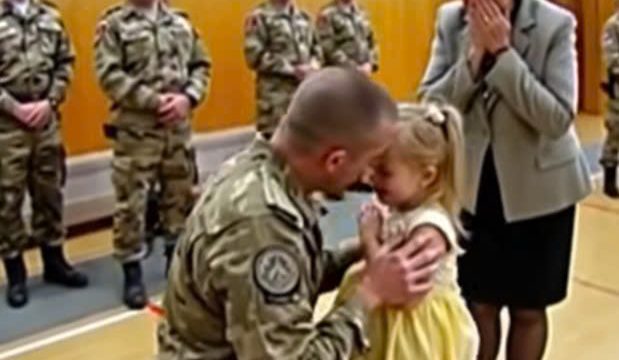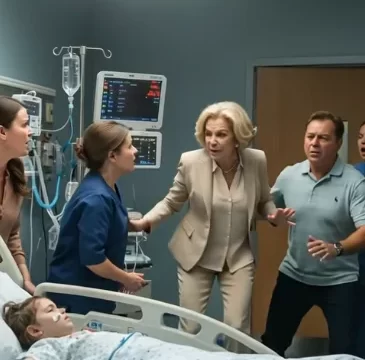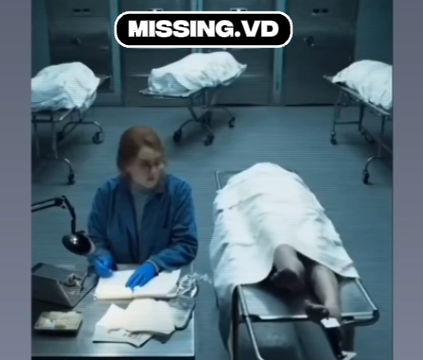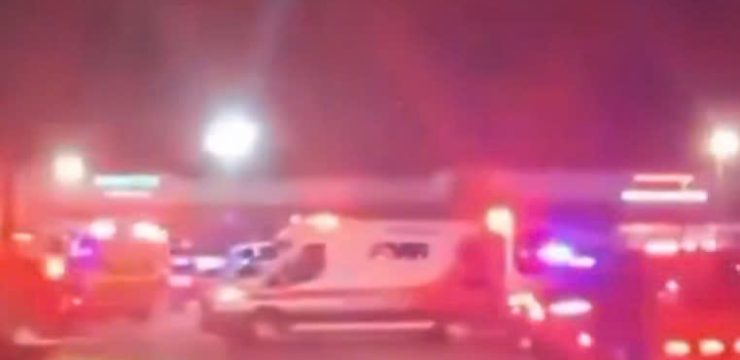A brutal reminder of nature’s power unfolded recently in Turkey, when a building collapsed amid ongoing earthquake rescue operations. The dramatic collapse—caught on video—sent shockwaves through local and global audiences, underscoring both the scale of devastation and the risks already perilous for first responders.
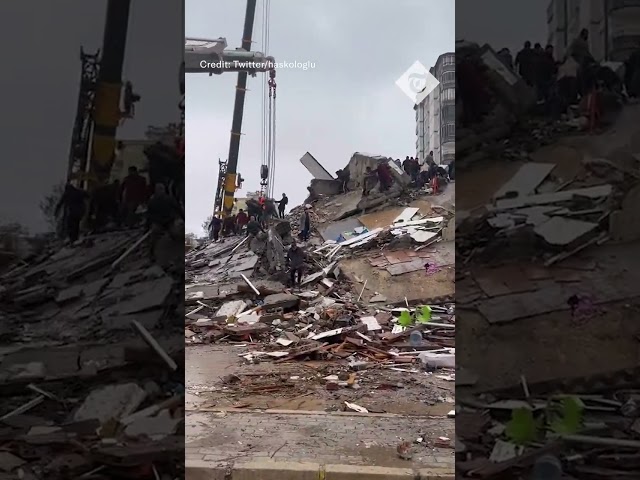
In the wake of the earthquake, emergency teams had been combing through ruins, hoping to find survivors among the rubble. As they worked, dust swirling in the air, the unexpected crash of the building added yet another tragedy to the disaster zone. The footage shows the structure buckling and crumbling, sending concrete, beams, and debris outward while rescue crews scrambled for cover. It is a stark illustration of how volatile the situation remains, even once the shaking has ceased.
Entire neighborhoods have been left leveled: houses reduced to skeletal frames, streets blocked by debris, and countless families displaced. The human toll of this catastrophe is immense. Beyond the physical damage, the emotional, economic, and social repercussions will resonate for years. As rescue efforts continue, humanitarian organizations have mobilized to deliver food, water, shelters, and medical care to those affected. The challenge is overwhelming, and the need is urgent.
Yet amidst the rubble and ruin, moments of hope emerge. Search teams—sometimes working around the clock—have retrieved survivors trapped for days, their rescue often hailed as miracles by residents and responders alike. Each life saved becomes a beacon in a dark landscape of loss and despair. These successes, however small in number compared to the scale of destruction, remind us of the resilience of both human beings and those risking their lives to help.
The collapse itself has drawn intense scrutiny. Observers note that rescue workers already operate in treacherous conditions—unstable structures, aftershocks, shifting debris. The added danger of a sudden collapse highlights how volatile disaster zones remain even after the initial event. Many have questioned whether more precautions or structural assessments could have prevented the collapse, especially during active rescue work. The answer may come only after full investigation.
Globally, nations have pledged support. Aid convoys, engineering teams, medical personnel, and relief materials are flowing in. Governments and non-profits alike are committing to both immediate relief and long-term rebuilding. Tent cities, temporary shelters, and food distribution centers are being established. Meanwhile, bulldozers and cranes work to clear wreckage and restore access to roads. Engineers and planners are beginning assessments of which areas can be rebuilt now and which must wait.
Still, rebuilding is neither simple nor swift. Infrastructure—roads, water systems, power lines—has suffered damage beyond what many could initially see. Survivors may remain without clean water, electricity, or safe shelter for weeks or months. Psychological trauma will run deep. Children who lost homes, families who lost loved ones, communities shattered—all must find paths forward. The physical reconstruction may be visible, but the emotional recovery will require time, compassion, and support.
Local officials are under pressure. Some have asked how emergency operations could continue in structures already weakened, raising questions of oversight, building codes, and disaster preparedness. Could prior inspections or risk assessments have prevented the collapse? Were rescue crews given full information about structural hazards? These are among the many queries being raised. The decisions made during disaster response are fraught with danger, and hindsight is harsh. But accountability will matter—not only for victims’ families, but to ensure future disasters don’t compound tragedy.
For citizens in the affected region, every day brings new uncertainty. Many have lost everything: homes, livelihoods, possessions. They face decisions about where to live, how to access food and water, and how to stay safe when aftershocks continue. Some are staying in temporary shelters or with relatives. Others linger near their ruined homes, hoping against hope that parts can be salvaged or rebuilt. The emotional cost is immense. Survivors speak of fear, disbelief, grief. But they also speak of resolve—to rebuild, to support neighbors, to persist.
Rescue teams themselves carry a heavy burden. Many are volunteers or professionals operating far beyond shift limits, enduring exhaustion, danger, and stress. They marvel at each life recovered and mourn each one lost. The collapse of that building during active rescue work serves as a brutal reminder that every step in these zones must be taken with care, that danger lurks around every corner. As one responder put it, “We came to save lives—but the earth keeps testing us.”
In coming days and weeks, attention will shift gradually from rescue to recovery to rebuilding. Engineers will evaluate which buildings can be repaired and which must be torn down. Urban planners will consider how best to redesign neighborhoods to be more resilient in future quakes. Aid organizers will set up programs for housing, schooling, healthcare, and livelihoods. International experts may assist with safer building standards, seismic retrofitting, and disaster preparedness planning.
But even with all those efforts, the pain remains. Families wait for news of missing loved ones. Communities grieve. Children lose friends, parents, schools. The emotional void is as deep as the physical one. No amount of rebuilding can immediately restore laughter or the sense of security that once defined everyday life. That must be earned again, slowly, with patience and support.
This tragic event forces us to confront a difficult truth: disasters do not wait until we’re ready. They strike regardless of readiness, and their aftermath reveals where weaknesses lie—structural, administrative, and human. The building collapse in Turkey, occurring during an active search and rescue mission, is not just an aftershock of the earthquake—it’s a manifestation of how fragile systems become when tested by catastrophe.
For the international community watching, it’s a vivid reminder of how crucial coordination, preparedness, and rapid response are. Earthquake zones demand not only immediate rescue, but careful planning, structural assessments, and ongoing vigilance. Even with the best teams, the margin for error is slim.
Above all, for the people directly affected, this moment is one of profound loss and resilience. The buildings may collapse, and the earth may tremble, but the human spirit survives. In the ruins, survivors will lean on each other, rebuild what they can, and find ways to heal. They will remember not only the tragedy, but also the kindness, courage, and solidarity that emerge when humanity faces its darkest hour.
Though the collapse has added another layer of tragedy to an already devastating earthquake, it also sharpens the call for responsibility, accountability, and renewed focus on safety. It is a reminder that each life matters, that rescue work carries risk, and that even amid ruin, there is room for hope.
As Turkey continues to dig through the wreckage, headfirst into a long recovery, the world watches—and listens. The collapse will be studied, memorialized, and learned from. For those who lost everything, words will not be enough. But in supporting reconstruction, sharing know-how, and standing with affected communities, the global response can help turn tragedy into renewed resolve.
In the silence now haunting the flattened streets, voices rise—voices of survivors, responders, families, and neighbors. Their message is simple: never again should disaster steal a child, a home, or a life because of neglect, poor planning, or inaction. The building’s fall in Turkey was a brutal punctuation mark in a larger story of suffering and endurance—but it also marks a turning point. The silence has broken, and those voices demand that rebuilding be more than bricks and mortar. It must be about resilience, fairness, and keeping people safe.
